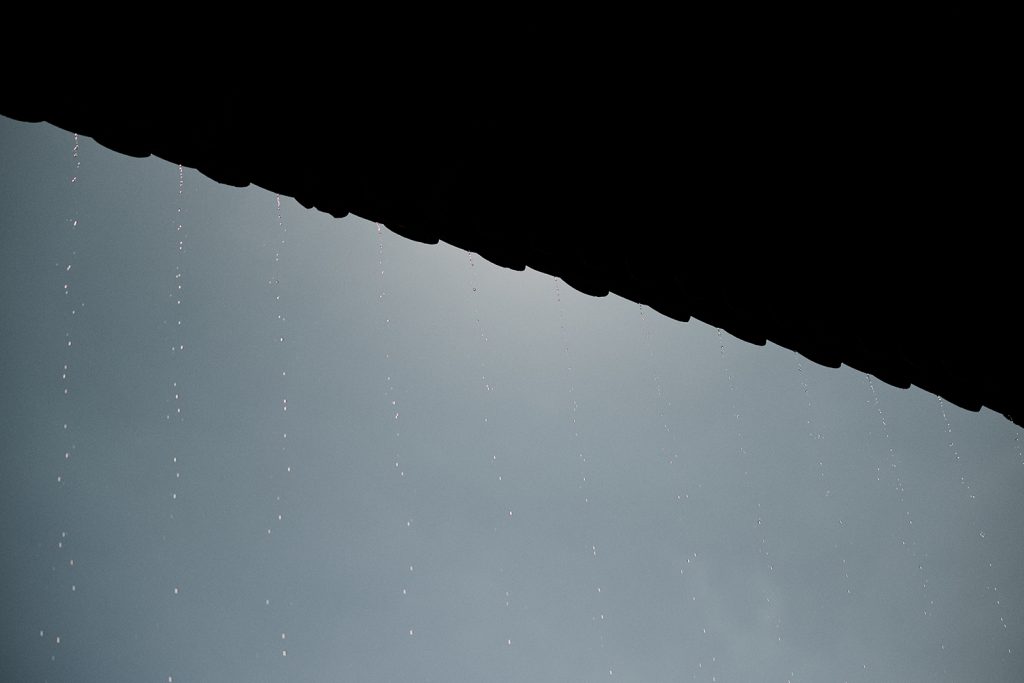“Dotoku”―air the land nurtured
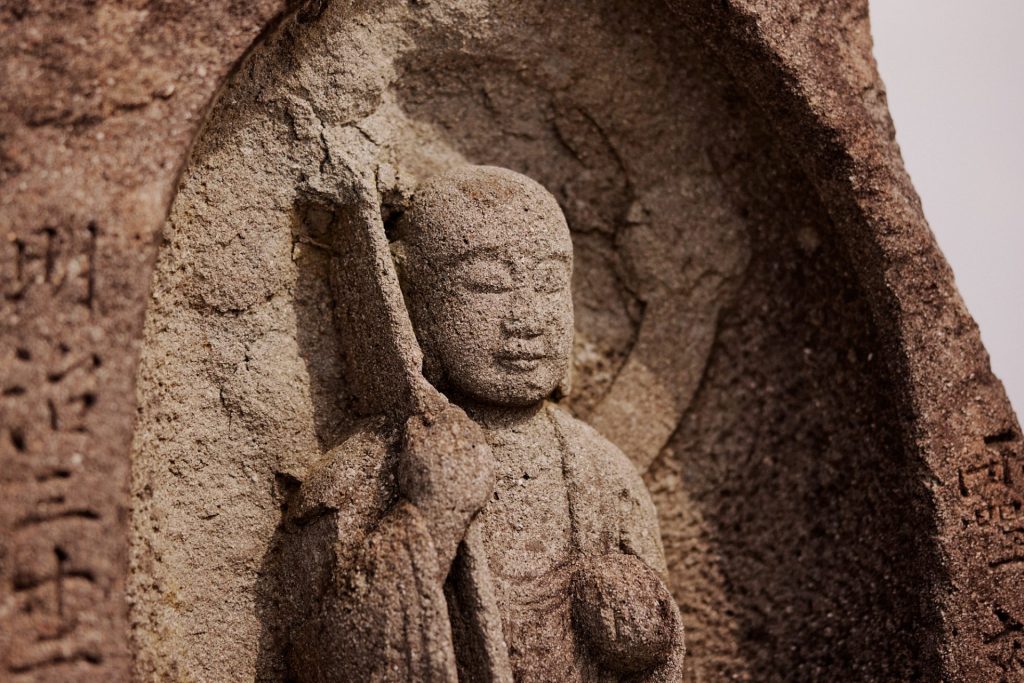
In the southwestern part of Toyama Prefecture, where Sankyo,the dispersed settlement is located, there is a word that has been handed down that describes the spiritual climate of the region: Dotoku
“Dotoku is probably closer to what Max Weber called ethos. In the Middle Ages, it would have been called ether, the energy that connects matter to matter, to air.”____ (Hiroshi OHTA, priest of Daifukuji Temple and chairman of Tonami Folk Art Association)
The life of faith in the land, accumulated over dozens of generations, and the hearts of people who are thankful for each other, become the climate and nurture people as an invisible force.It is expressed and felt in the various things of the land.
The term “Dotoku” is said to have been coined by Muneyoshi Yanagi, a founder of the folk art movement and a religious scholar, but some believe that it has been in the land since ancient times.
What is certain is that the term was commonly used from 1940 to 1955, when Yanagi, Shoji Hamada, Kanjiro Kawai, Bernard Leach, and other Mingei coterie members frequented this area.
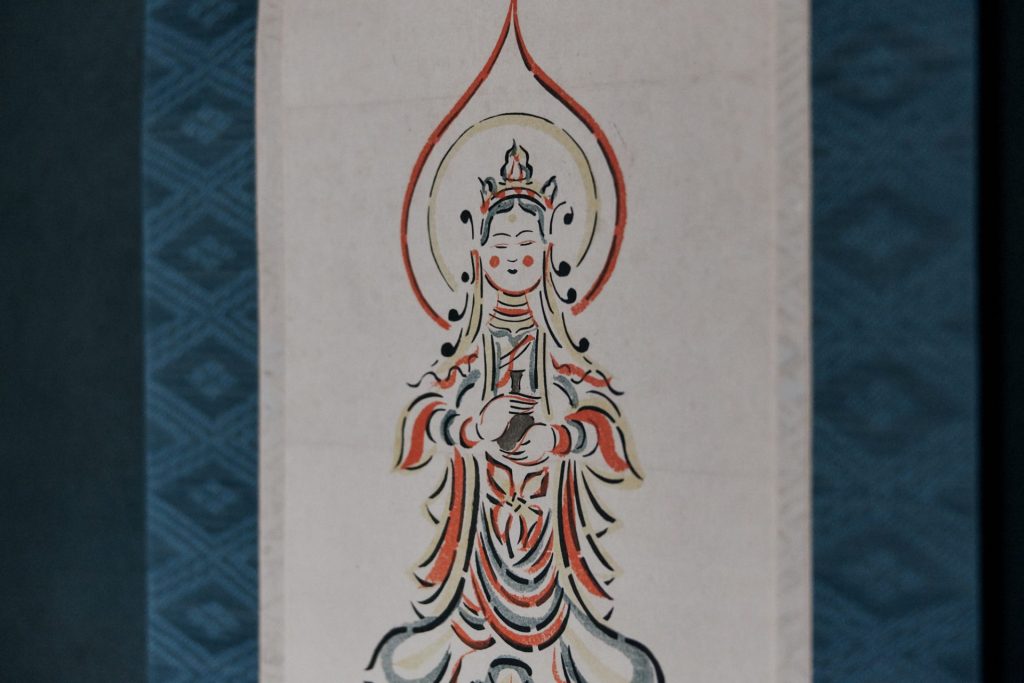
Shiko Munakata and Muneyoshi Yanagi, and the “dotoku” that influenced them
From 1945 to 1951, Shiko Munakata was evacuated to Fukumitsu in present-day Nanto City for safe.
When Yanagi saw Munakata’s paintings at Fukumitsu, he was surprised to find that the cloud of egotism he had felt before had disappeared.
The lines are quiet with vibrant, and the colors are bright and mysterious. Living in Fukumitsu, Munakata experienced a major internal turning point.
Until now, I had only been running around in the world I had come to on my own, but my feet naturally turned to the world of other forces, and only in “the Shinshu Oukoku”(area with many Shinshu believers), Toyama was I held by such a great Buddha’s will. (omitted)
In Toyama, I received a great gift. It was “Namuamidabutsu(Hail Amitabha Buddha). (Shiko Munakata, “Banngokudo”)
Yanagi himself was also struck by an epiphany at Zentokuji Temple in Johata, where he wrote “Bi no Houmon (Buddhist aesthetics)”, a collection of folk art aesthetics and a treatise that became the beginning of Buddhist aesthetics.
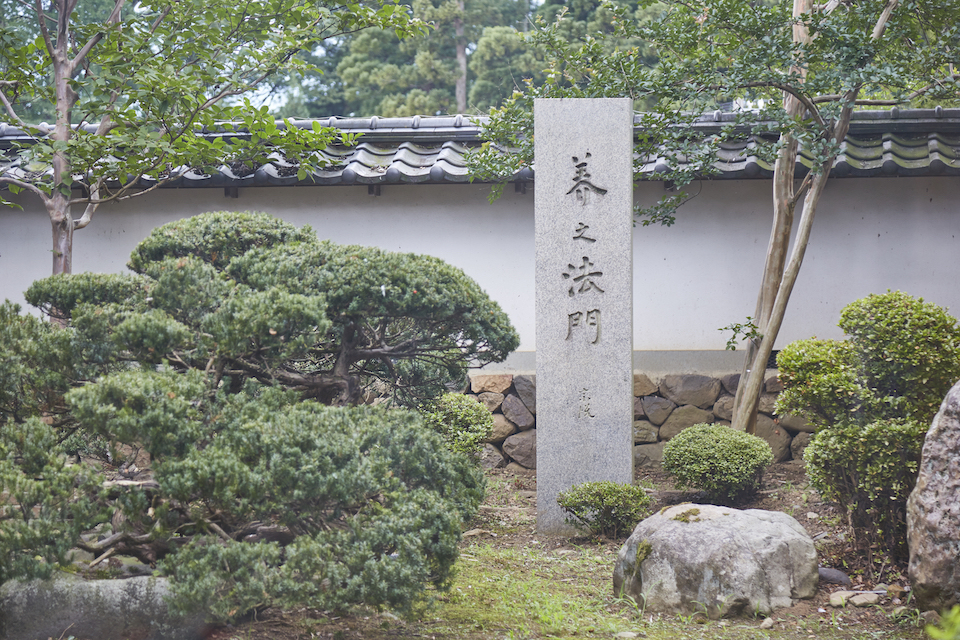
In this mysterious world, “everyone, unknowingly, lives as Amida Buddha,” surrounded by the magnitude of the Buddha’s will.
It was the atmosphere of this land, which was named “Dotoku” that drew Mingei comrade to this land and cultivated the opportunity to obtain revelations.
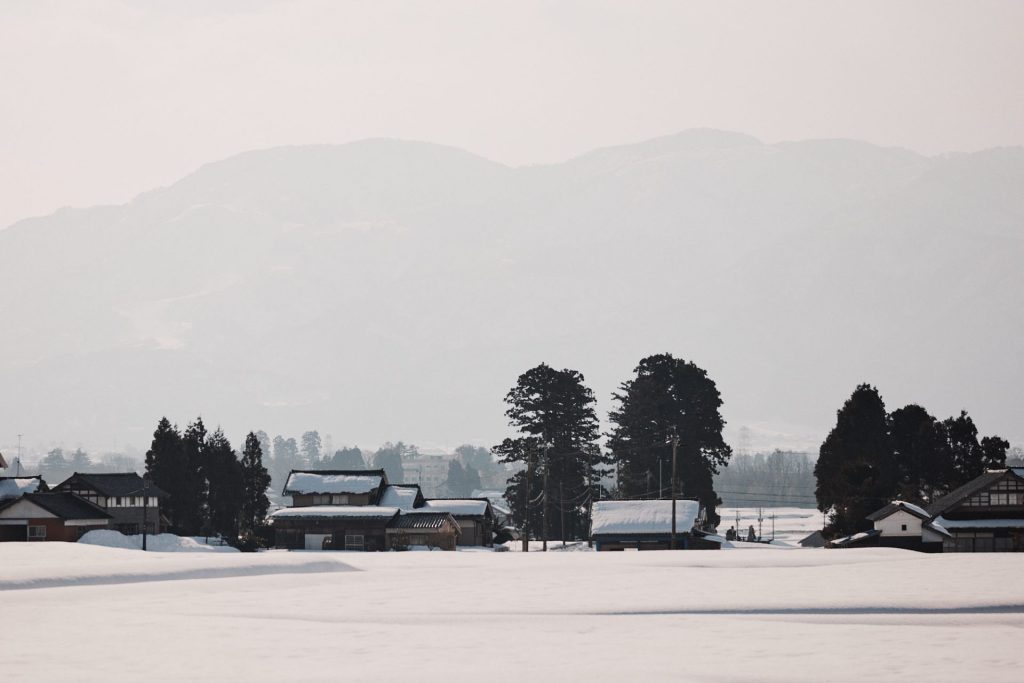
A history of local beliefs passed down from generation to generation
The southwestern part of Toyama Prefecture borders Kanazawa in Ishikawa Prefecture to the west, and Shirakawa in Gifu Prefecture to the south. The plains are a fan-shaped area formed by the Shogawa and Oyabe Rivers, surrounded on three sides by mountains like a folding screen, except to the north. The mountainous area (Gokayama) is the northern edge of the Hida Highlands and has a rugged terrain.
In the Nara period (710-794), the Iozen was opened, mountain worship and Shugendo (mountain asceticism) flourished, and at one time 48 temples and 3,000 monks were built in the area.
In the Kamakura period (1185-1333), the Jishu sect (a sect of the Jodo religion) spread, and the construction of Zuisenji Temple in Iba opened the door to the Jodo Shinshu faith.
The victory of the Ikko sect (Jodo Shinshu) in the “Etchu Ikkyo Ikki(putsch)” also contributed to the spread of Shinshu belief among the general populace.
This period coincided with the time when the cultivation of the villages was progressing to the center of the plains. The more diligent the work, the more fruitful it was, even though it was hard work. This must have been in line with the teachings of Jodo Shinshu, which taught people to surrender themselves to the power of the great beyond. In a spiritual climate of gratitude for blessings, the teaching of “other power” was accepted without discomfort, became a source of emotional support, and spread. Such a cycle is thought to have occurred.
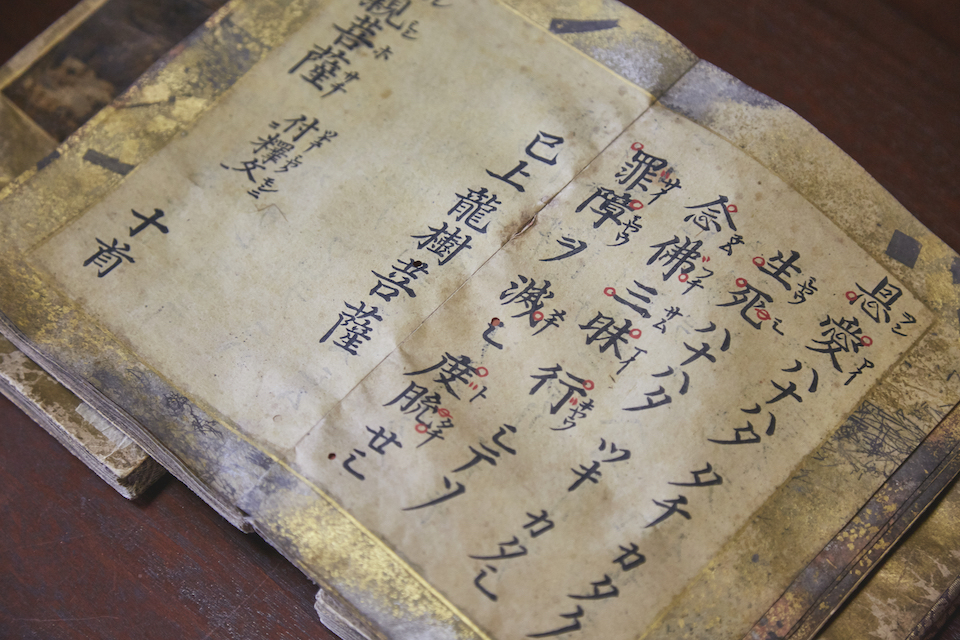
The foundation of faith and religiosity is the intuition of people who sense the transcendence and grace of nature.
In the southwestern part of Toyama Prefecture, there is a natural environment that makes it easy to sense various “functions” of nature, such as snow that provides water that never runs dry, a fan-shaped area surrounded by mountains on three sides, and rivers that make rice cultivation possible through waterways. The combination of these geographical conditions, including the distance from the capital, created a region with a strong religious tradition that has continued to the present day.
Faith in daily life is neither grandiose nor doctrinally strict. In the Tonami area, various things that cannot be divided by religious sects are mixed together in a broad manner, and over a long period of time, an atmosphere that can only be described as “dotoku” has been nurtured and inherited until today.
About “Dotoku”, words of people who live in the community
‘Mizu to Takumi’ Toyama West Toursim Promotion Association,the management body of Rakudo-an, conducted a survey on the relationship between Nanto City and folk arts at the request of Nanto City, Toyama Prefecture in 2021. (Nanto Mingei Survey Report)
When we asked the grandchildren and children of local priests and cultural people who were once deeply involved with Mingei coterie members about Dotoku, we received the following words.
What is Dotoku?
I think there is something that also emerges from your words.
__I believe that “Dotoku ” are not something special, but rather a way of being that comes from living rooted. Clear way of life with a definite direction to seek. I have a destination in mind, and my purpose in life is not to create it with my own ideas, but to live properly, which is not such a noble thing. It is said that “Dotoku” are something that exists, but I think that they are not something that exists, but something that is created.
__Being reminded that “things are not as they seem.” I guess there are opportunities in this region to make us aware of that. Conveniently, if it is hot, I can just turn on the air conditioner, but in fact, my life itself is not what I want it to be. Here, there is a religious thing added to it, and I bow my head in gratitude. Every single thing in my daily life has been inherited without my being aware of it. The depth of this history must have resonated with the antennae of Mr. Yanagi and his staff.
__ I think we had to help each other to get by, and helping each other was a prerequisite for our own survival. However, the word “Dotoku” is not limited in here, but I think it is something that exists all over Japan, I mean, everywhere. It seems strange for me to say it.
__We all have Dotoku in our respective lands. The joy given to this place itself is Dotoku that can be called “Dotoku,” not because we are Dotoku. In order to become a town that is widely loved by everyone, we should not shine our own light, but rather, we should let everyone shine our light and let Dotoku us. We owe it all to you, don’t we? We should not be obsessed with the words “Dotoku” or “Mingei,” but rather with the ability to see, to hear, and to be pleased with each other.
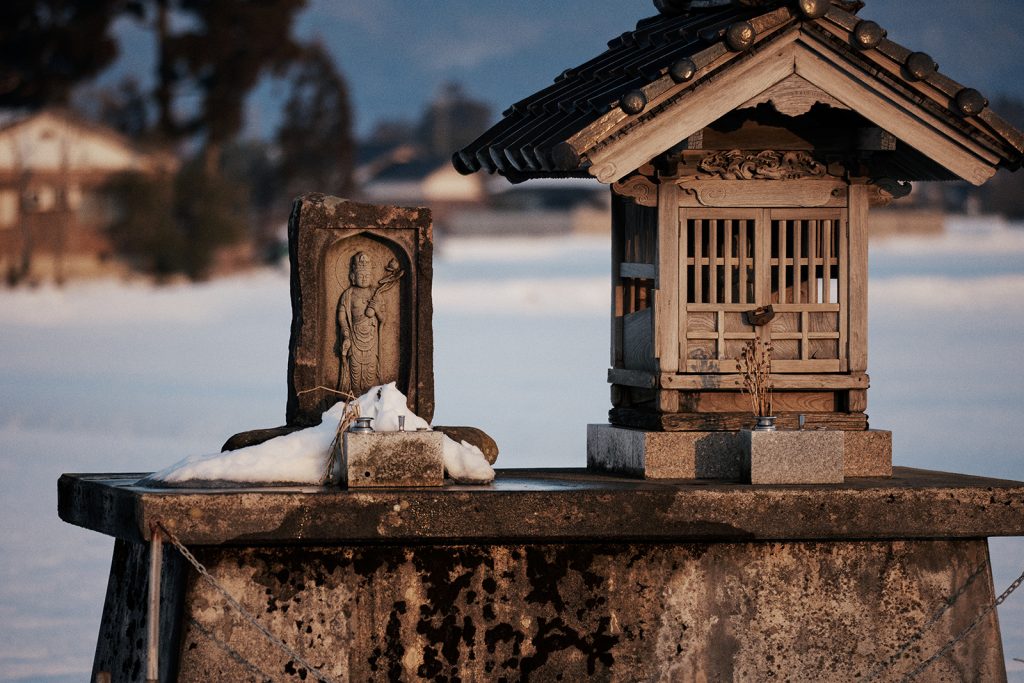
There was once an altruistic way of life nurtured in a community, and it still barely exists today. Even a glimpse of this way of life can bring deep learning and awareness to those of us who live in the present, entangled in our own egos.。
In our survey, many of the respondents expressed a sense of resistance to stating that “there is a Do-Toku here.
They feel uncomfortable saying, “There is a virtue here,” even though it was not created by me. Paradoxically, it seems that “not saying that one has the virtues of the land” is one of the virtues of the land.
Words are only auxiliary lines, and the essential understanding is something that is sensed with the body through contact with people, scenery, things, customs, food, etc. that embody the earthly virtues. Therefore, the meaning of the term “earthly virtues” is not so much that we “understand” them, but rather that we feel that there is something important, that we care about them, and that they make us feel that way.
Muneyoshi Yanagi describes “Buddhist aesthetics” as follows.
The need for aesthetics is a sign of the end of the world. It can also be said that the world has sunk so low into ugliness that beauty must be discussed. When we tend to fall into the wrong path, it is necessary to show what is the right kind of beauty. In the past, beauty and society were so united that it was not necessary. (Muneyoshi Yanagi, The Longing of Buddhist Aesthetics)
Similarly, when “earthly virtues” were taken for granted, they were inherited and passed on within the community and family without the need to be expressed in words. However, in this day and age, when the goodness of these customs is being buried and lost, it may be necessary to give a verbal outline to something that is difficult to give form to, and to pass it on.
